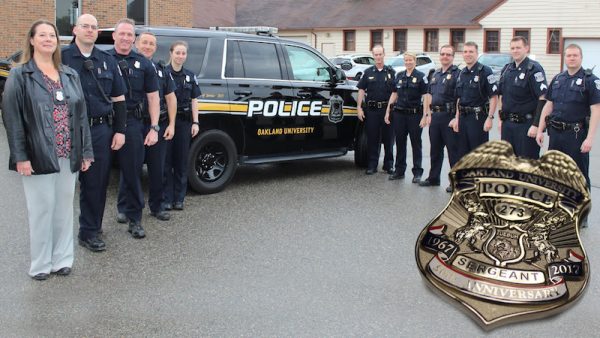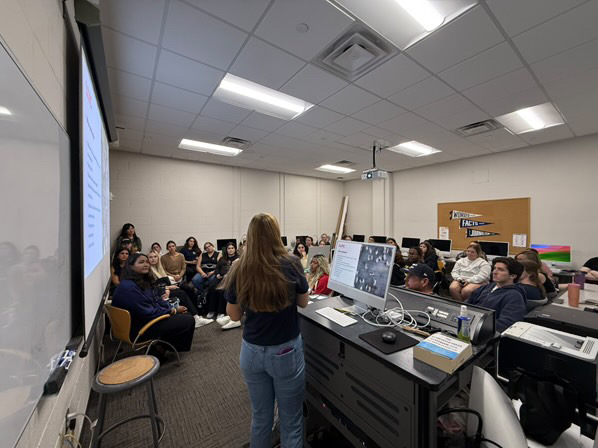Suicide Prevention Workshop
According to a recent survey by the Grizzlies Response Awareness and Suicide Prevention (GRASP) group 13 percent of Oakland University students surveyed considered taking their own life in the past 30 days. GRASP set up a workshop for students to learn about suicide prevention on Nov. 7.
High risk groups include commuters, nontraditional students, LGBTQIA+ students, international young people and veterans. Common risk factors can include economic distress, mental illness and substance abuse. Terry Dibble, a special lecturer for the School of Health Sciences, presented the information and the dos and don’ts when interacting with those feeling suicidal.
“A part of the issue is that people don’t know how to reach out to others for help,” Dibble said. “We find ourselves occupied with our busy schedules or being on our phones.”
OU offers many resources to those struggling, and even in the local community suicidal people can find the right help. Aside from faith-based communities and OUPD, there is the OU Gender and Sexuality Center, OU Veterans Support Services, OU International Students Office, Center for Multicultural Initiatives, Disability Support Services and the Counseling Center.
Student organizations such as Actively Moving Forward will work with students dealing with stressful situations as well as grief care. AMF hosts support meetings in the Human Health Building in room 2045 from 5 p.m. to 6:30 p.m. on Tuesdays.
“Our motto is to support, uplift, and empower which we apply when helping students deal with grief,” Abbey Kootsillas, a junior and member of AMF said. “We are currently trying to reach out to the student body and be a useful resource when dealing with heavy topics.”
Warning signs that are seen in suicidal people are typically: talking about wanting to kill themselves, expressing their desire to end their pain, and a feeling that they are a burden to others.
“Helping someone that is suicidal is like giving them CPR,” Dibble said.” There are basic things we can do until we get that person more help.”
SIDEBAR
Below are some tips from the conference to aid those worried about someone who may be suicidal.
Talk to that person in private but do not promise confidentiality because it may be a serious situation to the point where authorities should be notified. When engaging, show concern for their welfare, as well as be direct in assisting them.
it’s important to understand them and their point of view. Expressing willingness to help them is encouraging rather than ignoring or minimizing their pain. Offering hope can also assist in expressing empathy with this person.
Suicide is a permanent solution for a temporary problem.
Though it may be hard, be direct with the person. Learn to recognize the signs of suicide. Consider the following: have they collected the necessary materials for killing themselves? It’s important to not leave an actively suicidal person alone.





